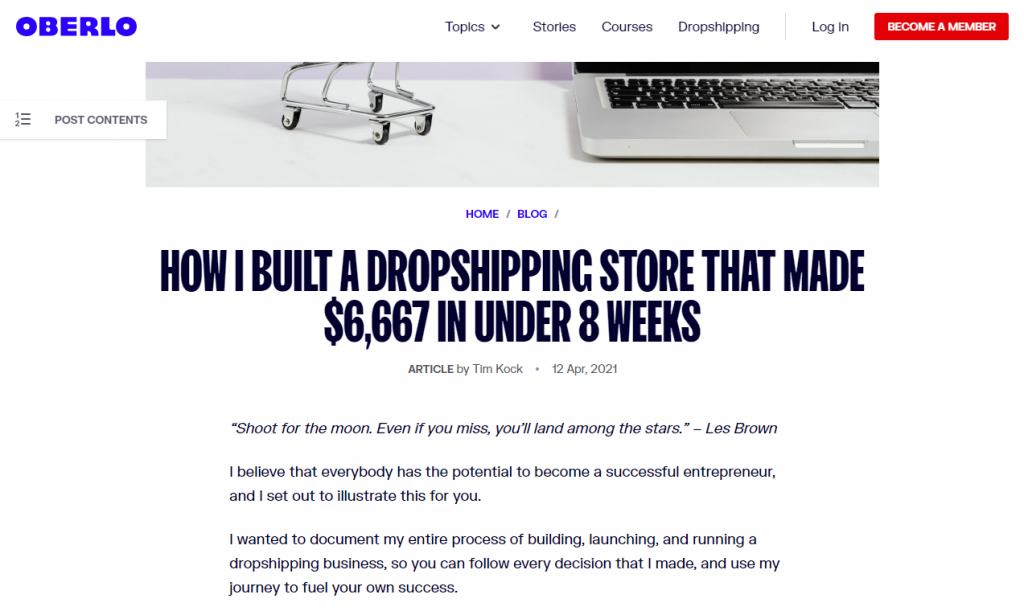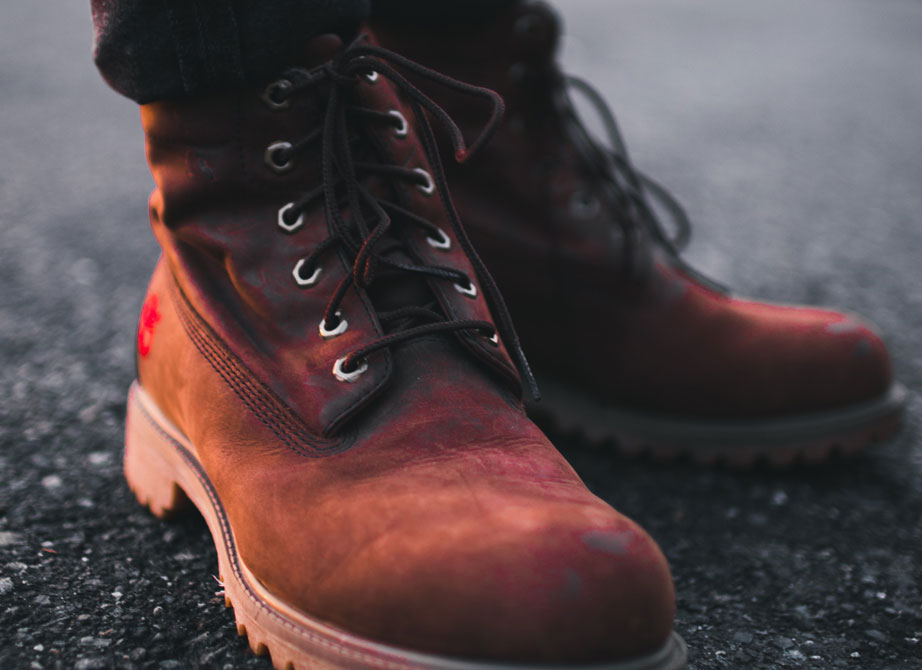When it comes to building your ecommerce business, there are different business models you can choose from.
Will you be selling an existing product, but have your supplier ship the product with custom product packaging? Or are you designing your product from scratch? Perhaps you’re feeling the temptation of trying dropshipping after hearing about Shopify stores making thousands within a few days? (Hint: don’t bother, because it doesn’t work!)
As with many concepts in business, when choosing the types of products to sell, there is a general positive correlation between risk and reward when launching a new product. Any option that offers more reward for less risk is almost always going to be preferable, especially if you are just starting out.
Below, we’ll take a look at dropshipping, private label, made-to-order and custom product business models and compare them across this spectrum of risk and reward to help explain why I believe made-to-order products offer the best reward for only a moderate amount of risk.
Overview of Product Business Models
Below is a simple matrix of each of the product business models and how they compare in terms of their risk-reward profiles. You’ll see that dropshipping has the lowest amount of risk, and a correspondingly low reward level. At the opposite end, a custom product business model has the highest amount of risk but also the highest reward level.
As I explain later in this article, the made-to-order approach is a very nice balance that can help you build a strong business with only minimal upfront investment risk.
| Risk Level | Reward Level | |
| Dropshipping | Lowest | Lowest |
| Private Label | Low | Low |
| Made-to-Order | Low | High |
| Custom Product | Highest | Highest |
Dropshipping – Lowest Risk, Lowest Reward
You’ll likely have come across resources touting the allegedly lucrative and low-risk ecommerce model that uses dropshipping. Dropshipping is indeed low risk, because it doesn’t require you to invest any money into product development or inventory. In fact, all you need is a Shopify website ($29 per month) and a modest marketing budget to get started. You really can’t get any lower risk than that for starting your own business.
A dropshipping business, however, provides very little value to the customer. The first and fundamental reason is that you are trying to sell a product that already exists, and is likely being sold by many other retailers, including dropshipping competitors. What is your value add to the customer?
- Is it fast shipping? Probably not, since Amazon offers excellent fast shipping. In fact, if they buy from you, the customer will probably end up waiting several weeks for it to arrive from China.
- Is it great customer service? Maybe, but you’ll have to work really hard to know the product well, and also provide great phone or email / chat support, and it’s hard to believe you’ll do that better than established retailers.
- Is it low pricing? Again, hard to compete against Amazon or Ebay on that one.

From the business’ perspective, dropshipping does not improve your brand’s value or recognition. That’s because a brand has to represent something and differentiate you from other brands. If you are selling the same product that everyone else is selling, by definition, there is no differentiation.
You might see some short-term success with dropshipping, and I’m not suggesting that blogs who claim fast success with dropshipping are outright lying. But any success will be short-lived, and you’ll likely have angry customers who are upset at having to wait weeks for their merchandise to arrive in a dirty and tattered China Post plastic bag.
In short, dropshipping is a really low risk way to get started, but it also provides the least amount of value to the customer because it is almost impossible to differentiate yourself among hundreds of other sellers promoting the exact same product.
Private Label – Lower Risk, Lower Reward
The next type of business model involves taking an existing product, but then putting your own brand name or logo on it. This requires a slightly higher level of financial risk, because at minimum, you will need to invest in some inventory that has your custom logo on it.
The good news, however, is that you most likely will not need to pay and up-front product development costs such as R&D and tooling, because those costs were already borne by the supplier who decided to make the product in the first place. Because your product is an existing design and specification, you may also be able to purchase smaller quantities, thereby reducing your risk even further.

While the customer experience may be better than dropshipping because of the faster shipping times, you still haven’t really solved the problem of providing a unique value proposition to the customer. You’re still taking a product that already exists, and is being mass produced and sold by countless retailers across the country. As a result, the potential reward is still relatively low.
Made to Order – Lower Risk, High Reward (The Sweet Spot!)
A made-to-order product is one that a supplier is able to manufacture, but does not regularly mass produce. Typically that means that there is no existing inventory, and the manufacturer will begin making the product only after receiving your order.
I believe this is the sweet spot for an ecommerce company for several reasons. First of all, the up-front risk is limited to a modest-sized minimum order quantity (MOQ), a requirement that your supplier may even waive for you as a first-time customer. You’re not inventing a new product or process, so you don’t need to pay for any R&D or tooling, so this really keeps your initial costs very low.
Because the products are made-to-order, however, this opens up the possibility for you to take control over some of the aspects of the product, and possibly even create a completely unique product that no one else in the world offers.
For example, let’s say you have a business idea to sell work boots, and found a manufacturer that you can work with. While the boot factory will likely have certain aspects of the product that are fixed, such as the overall shape and design, there will likely be many areas for you to specify, such as the shoe size, color, shoelace type, and perhaps even the rubber material quality.
By taking advantage of the opportunity to specify your own requirements and product features, you can drastically improve the value proposition to the customer by incorporating or highlighting features that differentiate your product. The more you can differentiate your product, the lower the chance that another retailer also has the same product.

Let’s go back to the work boots example to help clarify what this means. Let’s say you’ve decided that for one of your work boot product lines, you want to target women who do industrial work in wet and cold climates. You might first research the types of rubber materials that can withstand the elements and last a long time even in cold weather, and see if the supplier can incorporate this higher-quality rubber. Then, you might figure out the various color schemes that your manufacturer can provide, and choose ones that you think might appeal to your demographic.
This all seems like a lengthy process in building a customized product, but the only thing we’re doing is specifying particular raw materials in components where such substitutions can be made without significantly altering the product or the manufacturing process. By making some specific choices about the product that you believe increases its value to customers, you are able to increase the potential reward by having a unique and differentiated product. The best part of this is that you don’t have a spend a single dollar on up-front R&D or tooling. Every single dollar you spend on that first order will go towards making your unique product.
My ecommerce business operates in this sweet spot of medium risk and high reward. The products I sell are all made to order, meaning my suppliers never carry inventory of my product, but they are not custom products because all of the individual components and processes already exist. As a result, I have been able to build my business without any significant R&D or investment costs, but still offer a unique product that no other company currently provides, at least to my knowledge.
Is my product proprietary? Technically, no, and my suppliers are free to manufacture the same product if another customer asks for the same specifications. But I ask them to keep my specifications confidential, meaning they cannot go and advertise or suggest the exact same specifications to another customer. Unless a competitor wants to blatantly copy the product specifications, the chances of me having to deal with direct competitors is much lower.
Custom Product – High Risk, High Reward
When people talk about entrepreneurship and starting your own company, most people associate that with a new product invention. That’s definitely the most exciting, and the majority of Shark Tank contestants probably fall under this category.
When you come up with a new product invention, oftentimes, you must also invent the manufacturing process, and this is where the risk increases exponentially. Most commonly, a custom product will require tooling or a new mold, where specialized machinery or components need to be manufactured before a single unit of your product can be made.
If you watch Shark Tank for awhile, you’ll notice that the contestants are almost always short on cash. A common refrain is “I spent $30,000 of my own savings on tooling, and now that orders have started to come in, I need some cash to buy inventory.” And these are the semi-successful ones that you see on TV. What you don’t see on Shark Tank are the thousands of entrepreneurs that risked their own money to try to bring their invention or product idea to life, but failed to get any traction at all.
You’ll of course also see the success stories where entrepreneurs grow their businesses to impressive, large-scale operations that bring in millions. High reward? Most definitely – these entrepreneurs started off with a product and business idea that they had so much faith would deliver huge value to their customers. But the up-front risk was also extremely high.
What constitutes a custom product? There are of course many gray areas, but as a general rule, if the size and shape of your product is significantly different compared to any other product in the same or similar product category, there is a strong likelihood that you will have to pay a lot of money up front before you can even begin manufacturing.

Things To Look For in Finding Products That Are Made To Order
I’ve made the claim that made-to-order products with your own specifications offer the best sweet spot in terms of minimizing risk but increasing the potential for higher rewards. But how does one find products that fit the bill?
In general, I would recommend looking into products that give you lots of opportunity to specify product aspects or features without the need for tooling or process changes. The more aspects you can specify, the better, and the reason for this is that this gives you many more combinations of products that will help you differentiate yourself.
Additionally, the product should be something you personally are interested in, care about, or know a lot about. It’s difficult to find the motivation to understand all of the technical and manufacturing process aspects of a product unless you have some basis for passion in the product.
Specifying your own products is a lot of work, and you may find that you need to become a mini-expert on a particular type of material or pigment during this process. You may also find suppliers that push back or find reasons to reject your ideas. Sometimes, they have good reasons for the push-back (e.g. it isn’t compatible without tooling costs), but other times, they may just not want to deal with the complexities of all of your special requests. In some cases, they may just assume that the 5% increase in product cost is a dealbreaker, when in fact you are willing to pay up to 40% more for your unique specification. As always, communication and perseverance is key!